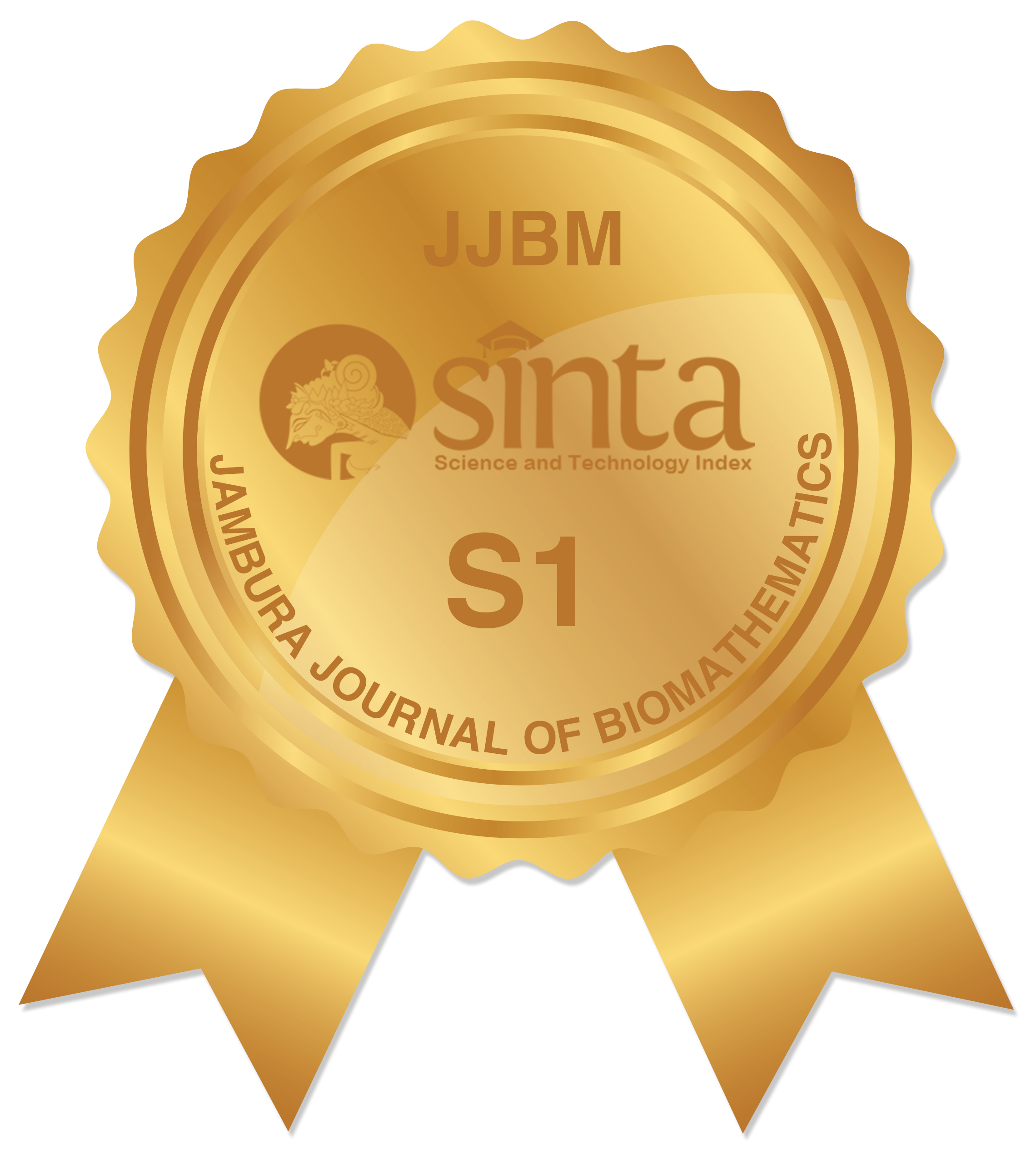Analisis kestabilan dan kontrol optimal model matematika penyebaran penyakit Ebola dengan variabel kontrol berupa karantina
Abstract
Keywords
Full Text:
PDF [INDONESIA]References
World Health Organization, "Ebola virus disease" https://www.who.int/, Beijing, accessed on March 13, 2018.
N. Dharmayanti dan I. Sendow, "Awareness of Ebola: exotic zoonotic disease" Indonesian Bulletin of Animal and Veterinary Sciences, vol. 25, no. 1, 2015.
Centers for Disease Control and Prevention, "Ebola hemorrhagic fever" https://www.cdc.gov/, accessed on March 13, 2018.
S. A. Carroll, J. S. Towner, T. K. Sealy, L. K. McMullan, M. L. Khristova, F. J. Burt, R. Swanepoel, P. E. Rollin, dan S. T. Nichol, "Molecular evolution of viruses of the family Filoviridae Based on 97 whole-genome sequences" Journal of Virology, vol. 87, no. 5, hal. 2608-2616, 2013.
F. Agusto, "Mathematical model of Ebola transmission dynamics with relapse and reinfection" Mathematical Biosciences, vol. 283, hal. 48-59, 2017.
P. Diaz, P. Constantine, K. Kalmbach, E. Jones, dan S. Pankavich, "A modified SEIR model for the spread of Ebola in Western Africa and metrics for resource allocation" Applied Mathematics and Computation, vol. 324, hal. 141-155, 2018.
A. Dénes dan A. B. Gumel, "Modeling the impact of quarantine during an outbreak of Ebola virus disease" Infectious Disease Modelling, vol. 4, hal. 12-27, 2019.[8] P. Van Den Driessche dan J. Watmough, "Reproduction numbers and sub-threshold endemic equilibria for compartmental models of disease transmission" Mathematical Biosciences, vol. 180, no. 1-2, hal. 29-48, 2002.
N. Chitnis, J. M. Hyman, dan J. M. Cushing, "Determining important parameters in the spread of malaria through the sensitivity analysis of a mathematical model" Bulletin of Mathematical Biology, vol. 70, no. 5, hal. 1272-1296, 2008.
L. S. Pontryagin, V. G. Boltyanskii, G. R. V, dan E. F. Mishchenko, The mathematical theory of optimal processes. New York: Wiley, 1962.
S. Lenhart dan J. T. Workman, Optimal control applied to biological models. Chapman and Hall/CRC, 2007.
DOI: https://doi.org/10.34312/jjbm.v2i1.10258
Copyright (c) 2021 Erzalina Ayu Satya Megananda, Cicik Alfiniyah, Miswanto Miswanto

This work is licensed under a Creative Commons Attribution-NonCommercial 4.0 International License.
Jambura Journal of Biomathematics (JJBM) has been indexed by:
EDITORIAL OFFICE OF JAMBURA JOURNAL OF BIOMATHEMATICS |
 | Department of Mathematics, Faculty of Mathematics and Natural Science, Universitas Negeri Gorontalo Jl. Prof. Dr. Ing. B. J. Habibie, Moutong, Tilongkabila, Kabupaten Bone Bolango 96554, Gorontalo, Indonesia |
 | Email: editorial.jjbm@ung.ac.id |
 | +6281356190818 (WA Only) |
 | Jambura Journal of Biomathematics (JJBM) by Department of Mathematics Universitas Negeri Gorontalo is licensed under a Creative Commons Attribution-NonCommercial 4.0 International License. Powered by Public Knowledge Project OJS. |
















